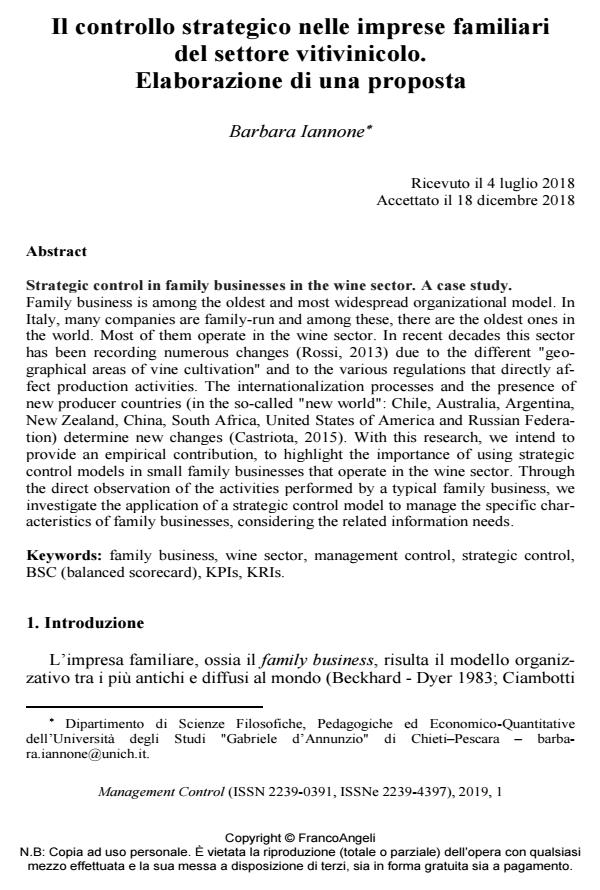Il controllo strategico nelle imprese familiari del settore vitivinicolo. Elaborazione di una proposta
Titolo Rivista MANAGEMENT CONTROL
Autori/Curatori Barbara Iannone
Anno di pubblicazione 2019 Fascicolo 2019/1
Lingua Italiano Numero pagine 28 P. 45-72 Dimensione file 710 KB
DOI 10.3280/MACO2019-001003
Il DOI è il codice a barre della proprietà intellettuale: per saperne di più
clicca qui
Qui sotto puoi vedere in anteprima la prima pagina di questo articolo.
Se questo articolo ti interessa, lo puoi acquistare (e scaricare in formato pdf) seguendo le facili indicazioni per acquistare il download credit. Acquista Download Credits per scaricare questo Articolo in formato PDF

FrancoAngeli è membro della Publishers International Linking Association, Inc (PILA)associazione indipendente e non profit per facilitare (attraverso i servizi tecnologici implementati da CrossRef.org) l’accesso degli studiosi ai contenuti digitali nelle pubblicazioni professionali e scientifiche
Family business is among the oldest and most widespread organizational model. In Italy, many companies are family-run and among these, there are the oldest ones in the world. Most of them operate in the wine sector. In recent decades this sector has been recording numerous changes (Rossi, 2013) due to the different "geographical areas of vine cultivation" and to the various regulations that directly affect production activities. The internationalization processes and the presence of new producer countries (in the so-called "new world": Chile, Australia, Argentina, New Zealand, China, South Africa, United States of America and Russian Federa-tion) determine new changes (Castriota, 2015). With this research, we intend to provide an empirical contribution, to highlight the importance of using strategic control models in small family businesses that operate in the wine sector. Through the direct observation of the activities performed by a typical family business, we investigate the application of a strategic control model to manage the specific characteristics of family businesses, considering the related information needs.
Parole chiave:Family business, wine sector, management control, strategic control, BSC (balanced scorecard), KPIs, KRIs.
- Which Strategic Control Suits Wine Family Companies to Improve Control? A Proposal Through the Balanced Scorecard in a Tuscany Wine Company of Michele Satta Barbara Iannone, Alice Anceschi, in Thunderbird International Business Review /2025 pp.201
DOI: 10.1002/tie.22420
Barbara Iannone, Il controllo strategico nelle imprese familiari del settore vitivinicolo. Elaborazione di una proposta in "MANAGEMENT CONTROL" 1/2019, pp 45-72, DOI: 10.3280/MACO2019-001003